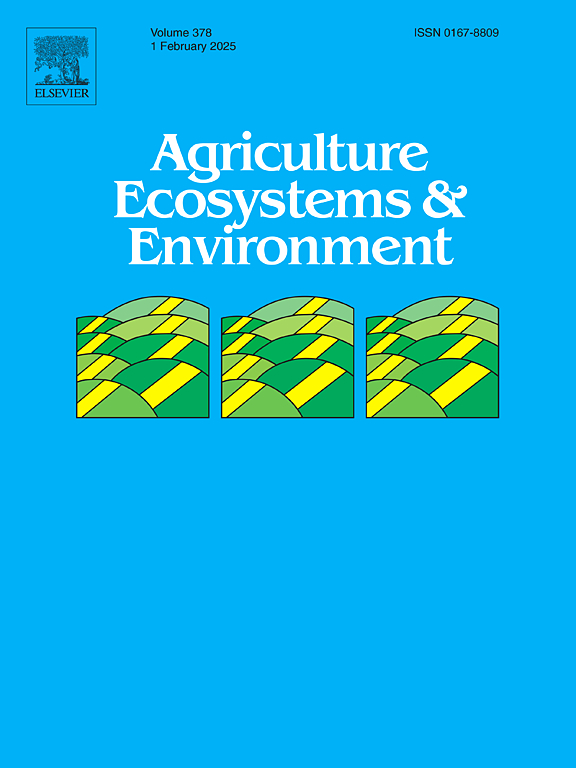Variation in the pollen diet of managed bee species across European agroecosystems
IF 6
1区 农林科学
Q1 AGRICULTURE, MULTIDISCIPLINARY
引用次数: 0
Abstract
Bee-mediated pollination plays a crucial role in sustaining global food production. However, while the demand for these pollination services is increasing, many bee species are in decline. To address this discrepancy, farmers use managed bee species to improve crop pollination. One key factor affecting pollination efficiency is the affinity for the crop of interest (i.e., the extent to which a bee integrates floral resources of a crop into its diet). In this study, we characterised and compared the pollen foraging preferences of three managed bee species: Apis mellifera, Bombus terrestris, and Osmia bicornis, across European agricultural landscapes and across biogeographic regions. Managed populations of each bee species were experimentally established at 128 agricultural sites growing either apple or rapeseed, in landscapes representing gradients in terms of the proportion of cropland, in eight European countries. We conducted pollen store sampling and employed palynological analyses to describe the foraging preferences of these species and to extrapolate their suitability as pollinators for both crops. Our findings reveal that A. mellifera and B. terrestris exhibited a more generalised pollen diet compared to O. bicornis, which showed stronger preference to certain pollen forage plants, but these were mainly non-crop rather than crop plants. These results question the relevance of using O. bicornis in apple orchards and rapeseed crops given their poor affinity with these crops. Overall, A. mellifera collected the highest proportion of rapeseed pollen in its diet, and A. mellifera and B. terrestris collected higher proportions of apple pollen than O. bicornis. Our findings also highlight substantial variation in the percentage of focal crop pollen in the diet across biogeographic regions, while landscape composition had virtually no impact. These results provide valuable insights for selecting the most suitable managed bee species to enhance the pollination of two key crops in Europe.
求助全文
约1分钟内获得全文
求助全文
来源期刊

Agriculture, Ecosystems & Environment
环境科学-环境科学
CiteScore
11.70
自引率
9.10%
发文量
392
审稿时长
26 days
期刊介绍:
Agriculture, Ecosystems and Environment publishes scientific articles dealing with the interface between agroecosystems and the natural environment, specifically how agriculture influences the environment and how changes in that environment impact agroecosystems. Preference is given to papers from experimental and observational research at the field, system or landscape level, from studies that enhance our understanding of processes using data-based biophysical modelling, and papers that bridge scientific disciplines and integrate knowledge. All papers should be placed in an international or wide comparative context.
 求助内容:
求助内容: 应助结果提醒方式:
应助结果提醒方式:


